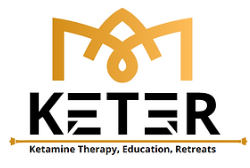
Understanding PTSD: The Silent Struggle
Post-Traumatic Stress Disorder (PTSD) is a debilitating condition that arises after experiencing or witnessing traumatic events. Individuals with PTSD often endure:
- Intrusive Memories: Unwanted, distressing recollections of the traumatic event.
- Avoidance: Steering clear of places, people, or activities that trigger memories of the trauma.
- Negative Mood Changes: Persistent feelings of hopelessness, detachment, or numbness.
- Hyperarousal: Being easily startled, feeling tense, or having difficulty sleeping.
These symptoms can severely impact daily life, making it challenging to maintain relationships, hold employment, or find joy in previously enjoyed activities.
The Brain’s Response to Trauma
Trauma can lead to significant changes in brain function and structure:
- Hyperactive Amygdala: The amygdala, responsible for processing fear and emotional memories, becomes overactive, leading to heightened fear responses and anxiety.
- Weakened Prefrontal Cortex: This area, crucial for decision-making and regulating emotions, may lose its ability to control the amygdala effectively, resulting in impulsivity and emotional dysregulation.
- Hippocampal Shrinkage: The hippocampus, essential for memory formation and distinguishing past from present experiences, can shrink, causing memory issues and flashbacks.
Ketamine: A New Hope for PTSD Sufferers
Traditional PTSD treatments, such as selective serotonin reuptake inhibitors (SSRIs) and prolonged exposure therapy, often require extended periods to show results and may not be effective for everyone. Ketamine, originally used as an anesthetic, has emerged as a rapid and promising alternative.
As trauma psychiatrist Dr. Isaac Nagel, MD, explains, “Ketamine represents a paradigm shift in PTSD treatment by directly targeting the brain’s neuroplasticity, allowing patients to process trauma in ways that were previously inaccessible to them.”
Recent reports highlight how ketamine therapy is offering hope to survivors of traumatic events in Israel, including those affected by war and terror attacks. (Haaretz)
How Ketamine Works
Ketamine primarily targets the glutamate system, a key neurotransmitter involved in synaptic plasticity and neural communication. Its mechanisms include:
- Regulating Amygdala Hyperactivity & Strengthening Prefrontal Cortex Function: By modulating glutamate transmission, ketamine helps reduce the overactivity of the amygdala, decreasing fear responses and lowering anxiety levels while enhancing synaptic plasticity in the prefrontal cortex to improve emotional regulation and decision-making capabilities.
- Stimulating Hippocampal Growth: Research suggests that ketamine promotes neurogenesis in the hippocampus, counteracting trauma-related shrinkage and improving memory function, which is crucial for distinguishing past trauma from present reality.
- Enhancing Neuroplasticity & Synaptic Repair: By blocking NMDA receptors and increasing glutamate release, ketamine stimulates the formation of new neural connections, allowing the brain to rewire itself and break free from maladaptive trauma responses, making long-term recovery more achievable.
- Rapid Symptom Relief & Therapy Facilitation: Unlike traditional antidepressants, which take weeks to work, ketamine provides immediate relief by rapidly modulating key brain areas involved in PTSD, making it easier for patients to engage in therapy and healing.
Clinical Evidence Supporting Ketamine for PTSD
Recent studies have demonstrated ketamine’s efficacy in alleviating PTSD symptoms:
- Rapid Symptom Reduction: A randomized controlled trial reported that repeated intravenous ketamine infusions led to significant reductions in PTSD symptoms within a week, with effects lasting up to two weeks post-treatment. (pmc.ncbi.nlm.nih.gov)
- Combination with Psychotherapy: Research from Yale Medicine indicates that integrating ketamine infusions with trauma-focused psychotherapy can accelerate and enhance therapeutic outcomes, potentially achieving in days what traditional therapies accomplish over months. (yalemedicine.org)
- Sustained Benefits: Studies have found that multiple ketamine infusions over a 12-day period can provide relief from PTSD and depression symptoms for up to 41 days post-treatment. (pmc.ncbi.nlm.nih.gov)
Ketamine-Assisted Psychotherapy at Keter Health in Israel
At Keter Health, located in Israel, ketamine treatment is integrated with psychotherapy to optimize healing. The process follows a structured approach:
Step 1: Initial Assessment with Dr. Isaac Nagel, MD
Your journey begins with a comprehensive assessment by Dr. Isaac Nagel, MD, who evaluates your mental health history, treatment goals, and determines whether Ketamine-Assisted Psychotherapy is right for you.
Step 2: Assignment to a Certified Ketamine Facilitator (CKF)
Once approved, you are paired with a Certified Ketamine Facilitator (CKF), a trained professional who will support you through the therapeutic process and ensure a safe, guided experience.
Step 3: Preparation Session with Your CKF
Before your first ketamine session, you will meet with your CKF to set intentions, discuss expectations, and mentally prepare for the experience in a comfortable environment.
Step 4: Ketamine Journey Session
At Keter Health, ketamine is primarily administered intramuscularly (IM) by a medical professional. The first session involves a low-dose injection to assess individual responses. In subsequent sessions, a higher dose may be used to facilitate deeper therapeutic experiences. The effects begin within 5-7 minutes, peak at 15-30 minutes, and gradually fade over time in a phase called the “long tail,” which provides a smooth and therapeutic return to ordinary consciousness.
Step 5: Integration Session
Post-session integration is crucial. In the days following your ketamine journey, you will meet with your CKF to process insights and translate them into lasting, meaningful changes in your life.
Ketamine serves as a catalyst for deep psychological healing, enhancing therapy by making subconscious material more accessible for exploration and resolution.
Conclusion
Ketamine offers a beacon of hope for those grappling with the relentless grip of PTSD. Its rapid action and unique mechanism provide an alternative for individuals unresponsive to traditional treatments. As research progresses, ketamine-assisted therapy may become a cornerstone in the fight against PTSD, helping sufferers reclaim their lives from the shadows of trauma.
Israeli soldiers and trauma survivors are increasingly turning to ketamine therapy as a life-saving treatment option. (The Jewish Chronicle)
If you or someone you know is struggling with PTSD, consider consulting Keter Health in Israel to explore whether Ketamine-Assisted Psychotherapy could be a viable path to healing.
